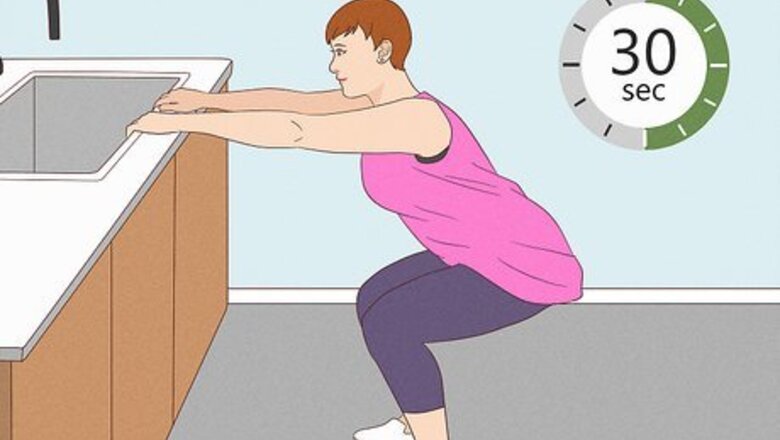
views
X
Research source
We’ll show you some simple exercises to perform at home, with and without equipment, and some key sleeping positions to help you erase bothersome tension in your back.
- Perform the kitchen sink stretch by gripping the lip of a sink, planting your feet, and sinking into a squatting position to stretch out your spine.
- Perform the cat and camel stretch by getting on all fours and arching your spin up toward the ceiling for 5 seconds, then down toward the floor for 5 seconds.
- Stretch your spine while sitting by raising your arms back and toward the ceiling with your palms facing upward, then rotating your hands inward.
Simple Decompression Exercises
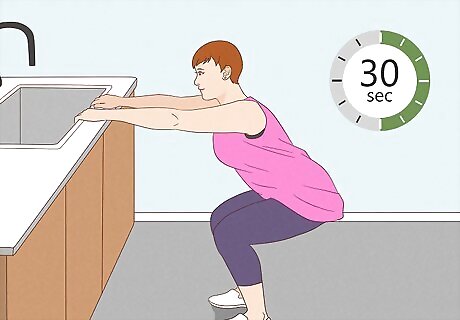
Kitchen sink stretch Stand facing your kitchen sink and grab the lip of the sink with your hands. Then, keeping your hips over your feet, take 2-3 small steps backward and carefully lower your hips into a sitting position, until your knees are bent at a right angle. Keep your arms straight and hold the pose for 30 seconds, then slowly rise back to a standing position. Repeat this pose 5 more times to help stretch out your lower back and hips. Perform it in the morning to start your day with a quick spine reset.
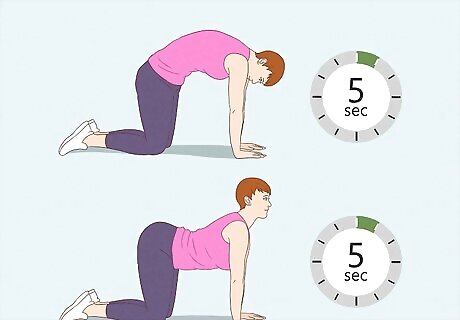
Cat and camel stretches Get on your hands and knees on the floor. Make sure your shoulders are directly above your hands and your hips are above your knees. Arch your back upwards as high as you can while letting your head drop downward, and hold that pose for 5 seconds. Then, slowly lift your head and arch your back down toward the floor, sticking your bottom out, and hold the pose for 5 seconds. Repeat this stretch 5 more times to decompress your spine with minimal strain and target your lower back and pelvis in particular. For floor stretches, find a carpeted area, or use a yoga mat or a blanket to soften the surface and make yourself more comfortable.
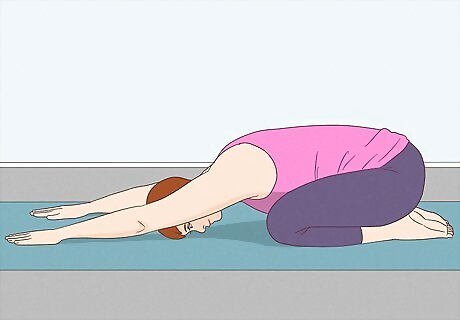
Prayer stretch into child’s pose Kneel with both knees together on the floor and sit on your heels. Do a prayer stretch by leaning forward and reaching your arms and hands straight out on the floor in front of you, touching your forehead to the floor. Then, move in to a child’s pose: drag your hands toward you along the floor and extend them behind you, with your palms facing upward. Hold the pose for as long as it takes you to take 8 measured breaths, about 10 seconds in and 10 seconds out. This pose helps to stretch and relax your back muscles, which can help relieve tension in your spine. Perform this pose 2-3 times a day, like during your lunch hour or just before bed, for a more relaxing spinal stretch.
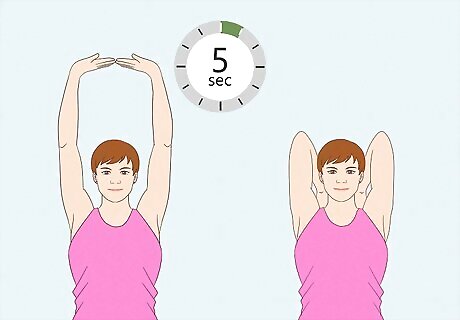
Overhead stretch While standing or sitting, straighten your back and reach over your head, keeping your neck in line with your shoulders, so that your elbows are over and behind your ears. Face your palms toward the ceiling and rotate your hands toward each other so that your fingers are almost touching, and hold them there for 5 seconds. Then, keeping your palms up, point your fingers behind you again and lower your arms so that your hands are level with your shoulders. Repeat this stretch 3 more times. Since it can be done sitting or standing, perform it 3-4 times throughout your day, like when you’re sitting at your desk, to quickly relieve pressure on your spine. This stretch targets your upper back and shoulders, helping to decompress your upper spine and neck.
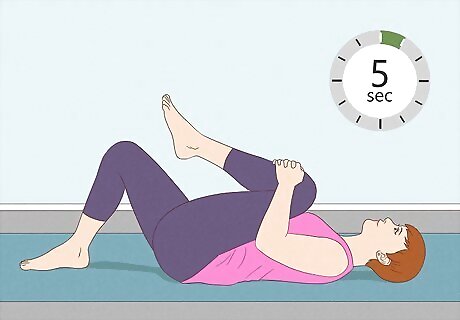
Knee-to-chest stretch Lie flat on your back with your shoulders touching the floor, feet planted, and knees bent. Use both hands to pull one knee up toward your chest, tightening your core. Hold that position for 5 seconds, then return to the starting position and repeat the stretch with the other knee. Repeat the routine 2-3 times, once in the morning and again at night. This stretch helps to “pull” out your spine, extending and decompressing the disks.
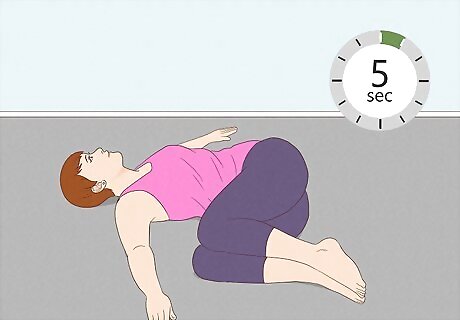
Trunk rotation Lie flat on your back with your knees bent and feet flat on the floor. Then, keeping your shoulders on the floor, rotate your knees so that they touch the floor on your left side, and hold them there for 5 seconds. Slowly raise your knees and touch them to the floor on your right side and hold them there for another 5 seconds. Repeat the stretch 10-15 times to stretch your back while lying down. This stretch helps to gently and effectively rotate your spine and its disks, loosening them and relieving pressure. Since this stretch is done lying down, perform it in bed to help your spine relax before you sleep.
Exercises with Equipment
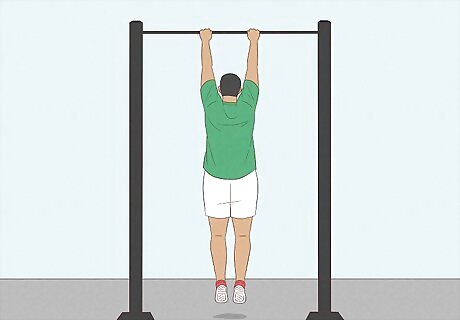
Bar hang The bar hang stretches your back with the help of a pull-up bar. Stand beneath a pull-up bar, then reach up and grab the bar so that your hands are shoulder-width apart with your palms facing forward. Tighten your core and let your body hang from the bar, without using your arms to hold your weight. Remain in the hanging position for 10-30 seconds, or as long as you’re able. For a less intense stretch, lower the bar or place a platform beneath the bar so that your feet touch the ground or the platform, and bend your knees to slowly stretch your back. This exercise helps stretch out your spine vertically, as well as your upper back, helping to decompress your entire spine.
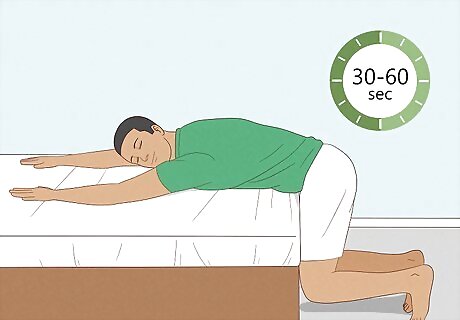
Table hang Find a couch or a bed and stand facing its edge. Lower your body onto the edge of the bed so that your upper body is on top of the bed, and everything just below your pelvis, including your hips, hangs off the side. Reach your hands forward and let your body go slack. Hold the pose for 30-60 seconds, and repeat the stretch 2-3 times a day, like when you just wake up or just before bed. This stretch uses the natural weight of your lower body to stretch out your back, relieving pressure on your spine.
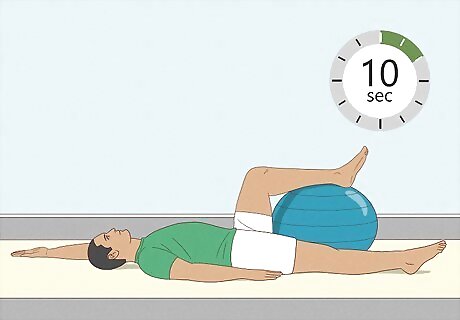
Inversion stretch Lie on your back with your shoulders touching the floor. Place an exercise ball under your legs so that your knees are raised directly above your hips and your calves rest on the ball. Raise one arm over and behind your head, with your palm facing upward, while straightening your leg on the opposite side. Hold the pose for 10 seconds, then return to the starting position and repeat with the other arm and leg. Perform this stretch 5-6 more times to engage your entire body while aligning your spine. To add to the stretch, “walk” the exercise ball along the floor with your feet, forward and backward, between each arm and leg raise.
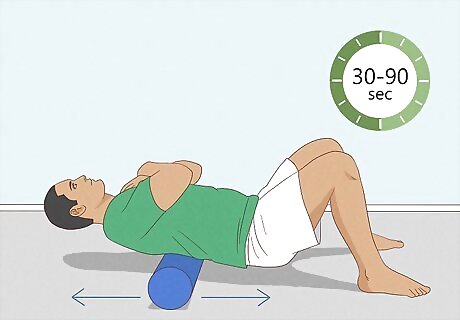
Foam rolling Sit on the floor and place a foam roller directly behind you. Slowly lower your torso backward until your back is resting on the roller. Plant your feet and lift your hips off the floor, then rock back and forth on the roller, targeting any areas of discomfort, for 30-90 seconds. Alternatively, use an exercise ball, medicine ball, or handheld muscle roller. Foam rolling stretches your spine and massages the muscle tissue in your back, relaxing any inflamed muscles and reducing pressure on your spine.
Sleeping Positions
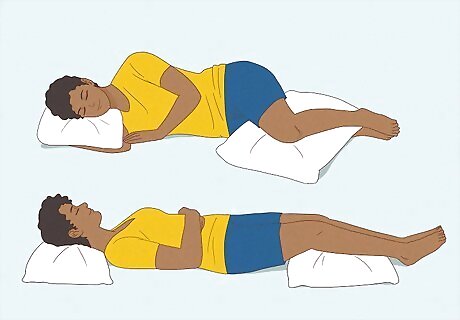
Sleep with a pillow between your legs or under your knees. If you tend to wake up with back pain, or want to help decompress your spine even as you sleep, grab an extra pillow! For side sleepers, place the pillow between your legs and sleep in a fetal position. For back sleepers, place a pillow under your knees. Both these positions help to relieve pressure on your spine throughout the night. If possible, try not to sleep on your stomach, which can be hard on your back. If you need to sleep on your stomach, place a pillow under your lower stomach and hips.
Benefits of Spinal Decompression
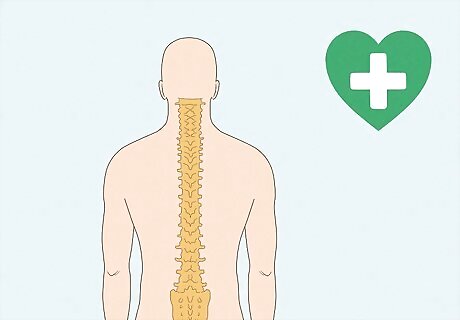
Spinal decompression can relieve pressure on your spinal nerves. Your spine is a pathway for a number of vital nerves that run from your head all along your body. Over time (or after an injury), the ligaments in your spine may degenerate, compressing those nerves. Regular spinal decompression exercises may help to decompress your spine, relieving pressure on those nerves, and relieving back pain in the process. While at-home exercises may be effective, talk to a physical therapist about discomfort in your spine if your pain disrupts your daily life.
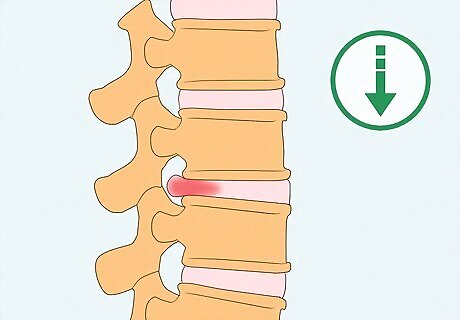
Decompressing your spine may alleviate disk problems. Along with regular wear and tear, the disks that make up your spine may shift, or the cushions between them may bulge, causing pinched nerves or even nerve damage. Performing exercises to decompress your spine can help to realign those disks, alleviating numbness, tingling, or pain that accompanies altered spinal disks. That said, shifting or degenerating disks and cushions may pose serious problems, and it’s best to speak with a doctor or physical therapist if you believe you have one of these more serious issues.
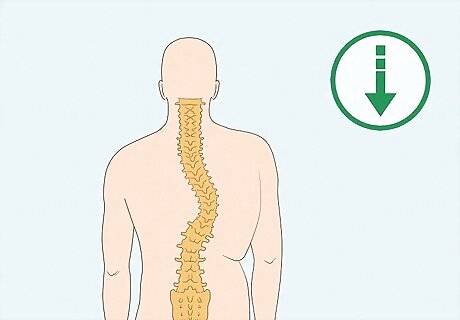
Spinal decompression can improve your posture. Poor posture can lead to pain, dysfunction, or general discomfort in your spine, which can make daily life unpleasant. Many exercises targeted toward spinal decompression have the added benefit of encouraging proper posture. Good posture helps to keep your bones and joints properly aligned, which in turn reduces stress on the ligaments that hold them together, which reduces overall pain and discomfort. Make your spinal decompression more effective by improving your posture, as well. Throughout the day, set reminders on your phone to sit straight in your chair with your shoulders back. Also, make a point to stand up and walk around for about 5 minutes every 30 minutes to an hour to stretch your back out naturally.



















Comments
0 comment